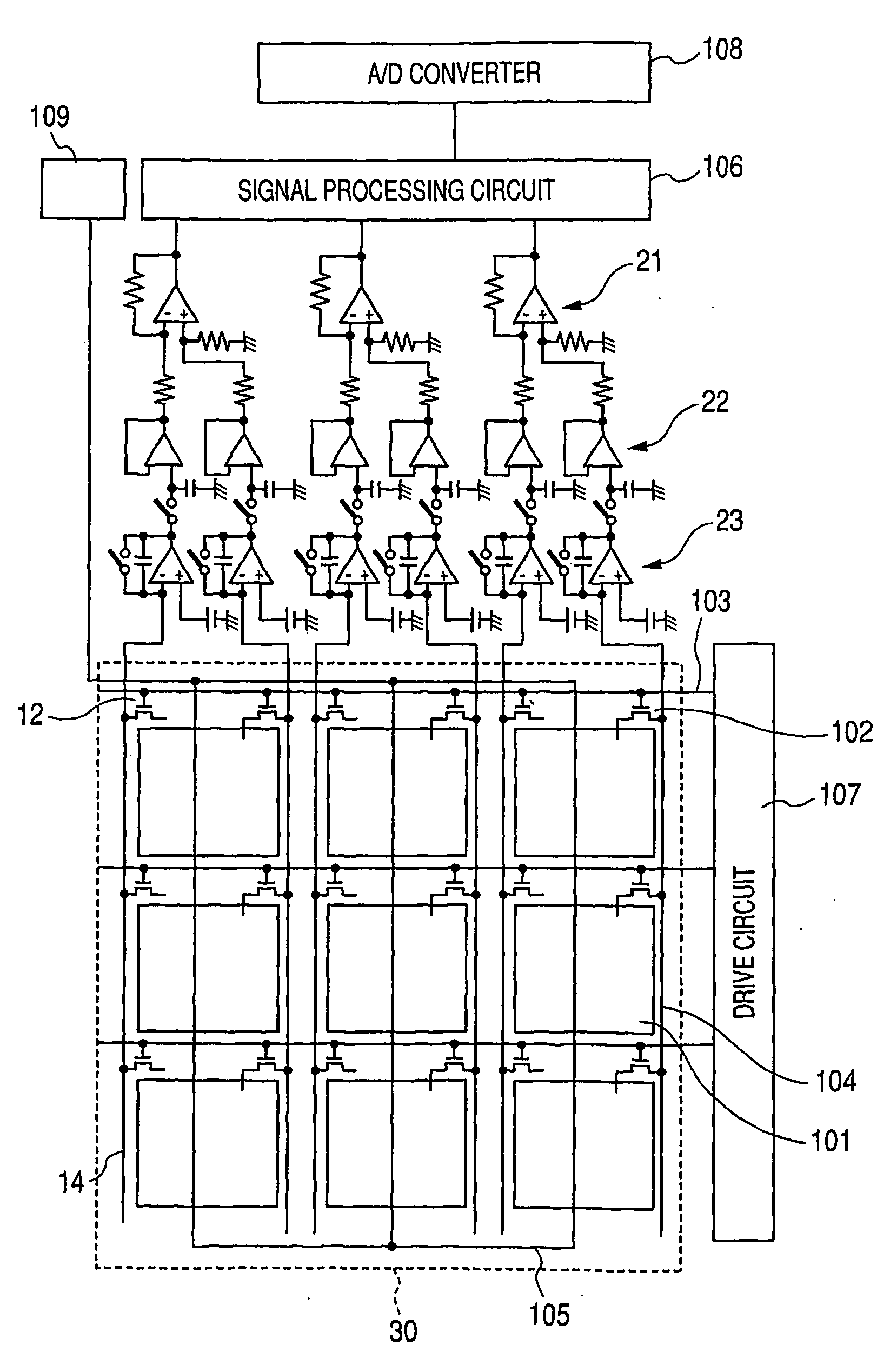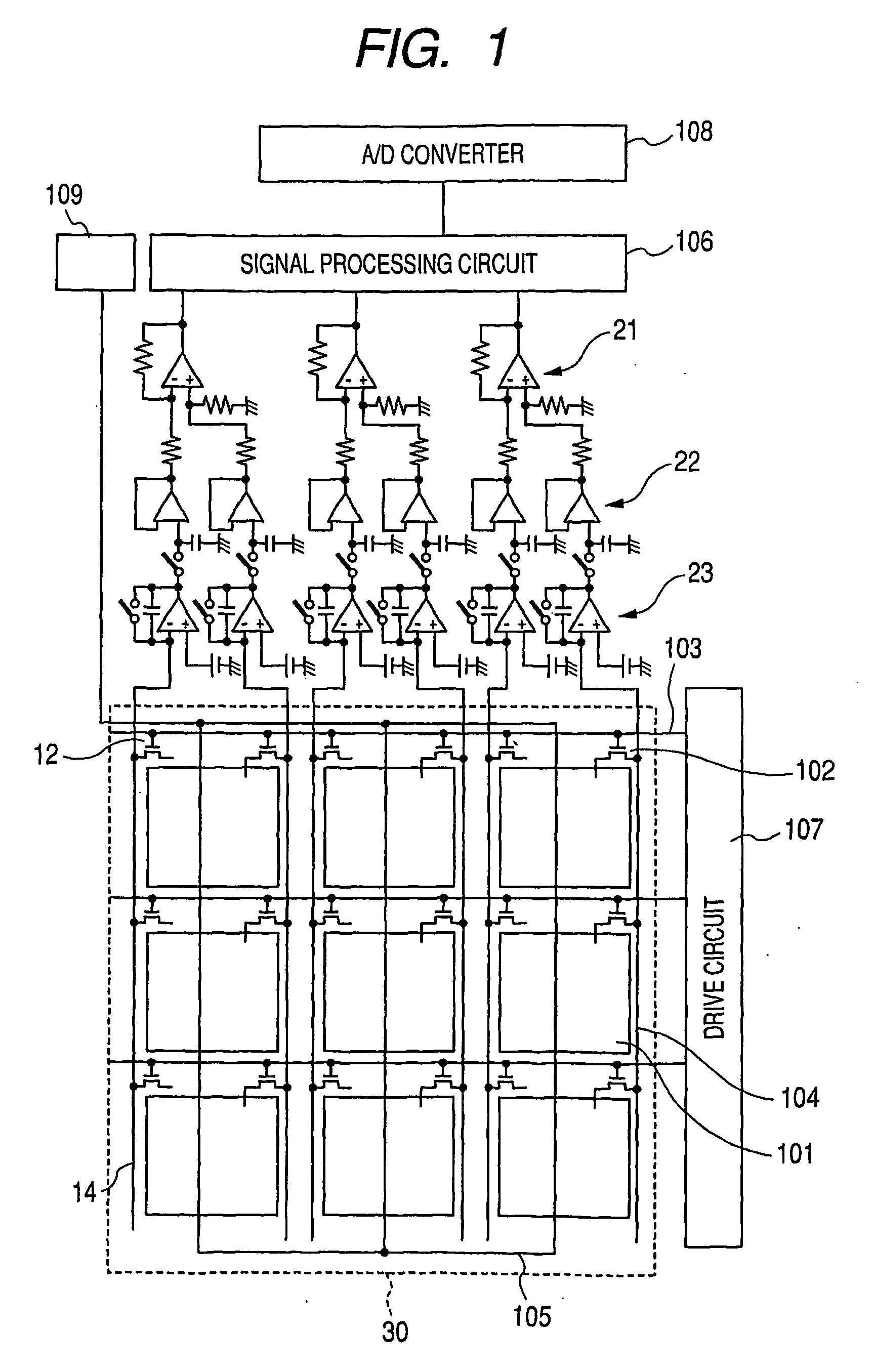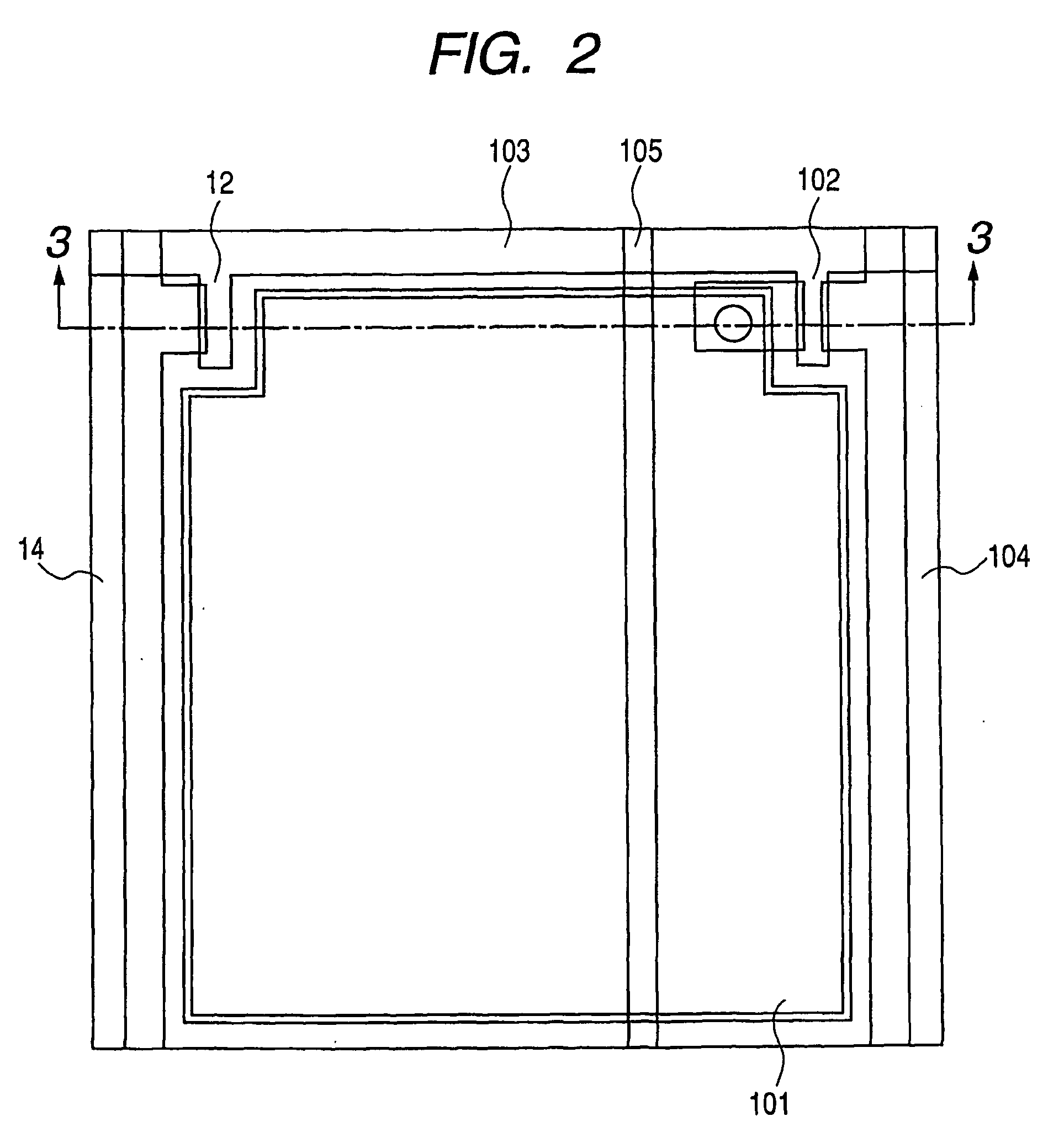Radiation detecting apparatus and radiation imaging system
a radiation imaging system and detecting apparatus technology, applied in the field of radiation detecting apparatus and radiation imaging system, can solve the problems of insufficient cancellation accuracy of noise cancellation caused by offset components, insufficient noise cancellation of so-called dark outputs, and insufficient noise cancellation accuracy, so as to achieve good image and reduce noise
- Summary
- Abstract
- Description
- Claims
- Application Information
AI Technical Summary
Benefits of technology
Problems solved by technology
Method used
Image
Examples
first embodiment
[0045]FIG. 1 is a schematic circuit diagram illustrating the configuration of a radiation detecting apparatus as a first embodiment of the present invention. In the present invention the radiation may be a visible light.
[0046]As illustrated in FIG. 1, the radiation detecting apparatus includes PIN type photoelectric conversion elements 101 as conversion elements for converting incident radiations into electric signals, and transfer TFTs 102 as first switch elements. Moreover, the radiation detecting apparatus includes drive lines 103 connected electrically to the gate electrodes of the transfer TFTs 102, and first signal lines 104 connected electrically to the source or drain electrodes as the main electrodes of the transfer TFTs 102. The transfer TFTs 102 include first main electrodes connected electrically to the first signal lines 104, second main electrodes connected electrically to the conversion elements 101, and gate electrodes, operating as control electrodes, connected elec...
second embodiment
[0077]FIG. 7 is a schematic circuit diagram illustrating the configuration of a radiation detecting apparatus as a second embodiment of the present invention. The present embodiment adopts a double gate structure in which each of the transfer TFTs 102 and the dummy TFTs 12 includes serially connected two TFTs, the gate electrodes of which are connected to one of the common drive lines 103. Then, as described below, the transfer TFTs 102 and the dummy TFTs 12 are polysilicon TFTs. By configuring the transfer TFTs 102 and the dummy TFTs 12 to have the double gate structures, the leak current of each of the TFTs 102 and 12 can be decreased, and consequently noises can be decreased to enable the obtainment of a good image.
[0078]FIG. 8 is a schematic plan view of one pixel of a radiation detecting apparatus of the present embodiment. In FIG. 8, the reference numerals are same as those of FIG. 7. FIG. 9 is a schematic sectional view taken along a line 9-9 in FIG. 8.
[0079]As illustrated in...
third embodiment
[0082]FIG. 10 is a schematic circuit diagram illustrating the configuration of a radiation detecting apparatus as a second embodiment of the present invention.
[0083]As illustrated in FIG. 10, the radiation detecting apparatus includes a power source 501 capable of supplying bias potential and reference voltage wiring 502 for the dummy TFTs 12. The other components are denoted by the same signs as those in the preceding figures.
[0084]Also in the present embodiment, similarly to the first embodiment, the dummy signal lines 14 and the dummy TFTs 12 have the same layer configurations and the same sizes as those of the signal lines 104 and the transfer TFTs 102, respectively.
[0085]FIG. 11 is a schematic plan view of a pixel of the radiation detecting apparatus of the present embodiment. In FIG. 11, reference numerals are the same as those in FIG. 10. FIG. 12 is a schematic sectional view taken along a line 12-12 in FIG. 11.
[0086]A first electrode of the source and drain electrodes 304, w...
PUM
 Login to View More
Login to View More Abstract
Description
Claims
Application Information
 Login to View More
Login to View More - R&D
- Intellectual Property
- Life Sciences
- Materials
- Tech Scout
- Unparalleled Data Quality
- Higher Quality Content
- 60% Fewer Hallucinations
Browse by: Latest US Patents, China's latest patents, Technical Efficacy Thesaurus, Application Domain, Technology Topic, Popular Technical Reports.
© 2025 PatSnap. All rights reserved.Legal|Privacy policy|Modern Slavery Act Transparency Statement|Sitemap|About US| Contact US: help@patsnap.com



